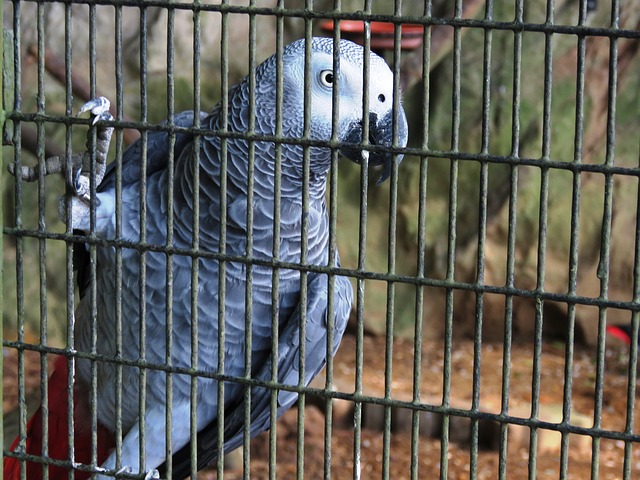Despite efforts to combat impaired driving, "loopholes in DUI legislation" create challenges in enforcement and justice. Subjective BAC measurements and exploitable legal defenses undermine consistency. In the digital age, advanced tech solutions like AI analytics and smart vehicle integration address these gaps, deterring impaired driving and enhancing public safety by precisely regulating DUI incidents. As technology evolves, regular updates to laws are crucial to maintain legal consistency and fairness in enforcement against emerging challenges posed by autonomous vehicles and advanced substance delivery systems.
In an era driven by technological advancements, the effectiveness of current DUI legislation is being challenged. Traditional laws struggle to keep pace with innovative methods of impairment detection, creating significant loopholes in our legal frameworks. This article delves into the critical need for future-proofing DUI laws through technology integration. We explore existing limitations, identify common gaps, and present strategies to enhance legislation, ensuring public safety while navigating evolving scientific advancements. By examining successful case studies, we offer insights into a more robust and adaptive approach to drunk driving regulations.
- Understanding Current DUI Legislation and Its Limitations
- The Role of Technology in Enhancing DUI Laws
- Identifying Loopholes: Challenges and Gaps in Existing Law
- Future-Proofing Strategies: Adapting to Technological Advancements
- Case Studies: Successful Implementation of Tech-Infused DUI Solutions
Understanding Current DUI Legislation and Its Limitations

In many jurisdictions, driving under the influence (DUI) legislation aims to deter and penalize individuals who operate vehicles while impaired. However, the current legal framework is not without its challenges and loopholes in DUI legislation. These gaps can lead to inconsistent enforcement and potential miscarriages of justice, as some cases may slip through the cracks or result in inadequate sentences.
The limitations often lie in subjective assessments of impairment, where blood alcohol concentration (BAC) levels are used as a primary indicator but may not fully capture an individual’s level of intoxication. Additionally, legal defenses can exploit these ambiguities, leading to reduced charges or acquittals. Understanding and addressing these loopholes is crucial for future-proofing DUI laws, ensuring they remain effective in safeguarding public safety from impaired driving.
The Role of Technology in Enhancing DUI Laws

In today’s digital era, technology plays a pivotal role in enhancing and future-proofing legislation, particularly in areas like DUI (Driving Under the Influence) laws. By leveraging advanced tech solutions, lawmakers can address longstanding loopholes that have posed significant challenges to enforcement and public safety. For instance, AI-driven analytics can analyze vast datasets to identify patterns and trends in DUI incidents, enabling more precise and effective regulation.
Innovations such as smart vehicle integration, where cars themselves can detect and report impaired driving, offer a game-changing approach. Real-time data from connected vehicles can provide immediate insights into driver behavior, potentially deterring those considering DUI. Additionally, technology facilitates the implementation of robust verification systems, ensuring accurate identification and age confirmation during traffic stops, thus strengthening measures against underage drinking and driving.
Identifying Loopholes: Challenges and Gaps in Existing Law

The ever-evolving nature of technology presents unique challenges for lawmakers, as new innovations often outpace existing legislation. One prominent area where this is evident is in the field of DUI (Driving Under the Influence) laws and their ability to keep pace with technological advancements. The current legal framework, while well-intentioned, may contain loopholes that fail to address modern issues surrounding alcohol and substance impairment. For instance, with the rise of autonomous vehicles, defining liability in cases where a self-driving car is involved in an accident related to DUI becomes complex. Traditional laws might not account for these new scenarios, creating potential gaps in accountability.
Additionally, as technology advances, so do methods of consumption and distribution of impaired substances. The emergence of novel drug delivery systems or altered forms of alcohol may challenge the effectiveness of current DUI legislation. Loopholes in definitions or classification could result in legal ambiguities, hindering law enforcement’s ability to enforce laws fairly and consistently. Identifying and patching these loopholes is crucial to ensuring that the legal system remains a robust tool for public safety in an era where technology continuously pushes boundaries.
Future-Proofing Strategies: Adapting to Technological Advancements

The rapid pace of technological change presents significant challenges for law and legislation, as existing rules can quickly become outdated. Future-proofing legal frameworks is essential to address emerging issues and ensure they remain relevant in a digital age. One key strategy involves proactive adaptation to new technologies, allowing laws to evolve alongside innovations. This may include regular reviews and updates to incorporate advancements that could impact various sectors, such as data privacy, cybersecurity, or even transportation regulations.
For instance, navigating the rise of autonomous vehicles requires updating traffic laws to account for self-driving cars’ unique capabilities and limitations. Similarly, addressing loopholes in DUI (Driving Under the Influence) legislation becomes more complex with the introduction of new technologies like advanced driver assistance systems. Future-proofing involves recognizing these technological shifts and promptly adapting legal frameworks to maintain public safety and justice in a rapidly changing world.
Case Studies: Successful Implementation of Tech-Infused DUI Solutions

The successful implementation of tech-infused solutions in DUI (Driving Under the Influence) enforcement is a powerful example of how innovation can address long-standing challenges in legislation. By leveraging advanced technologies, many jurisdictions have been able to close loopholes in DUI laws and enhance public safety. For instance, the use of specialized breathalyzer devices equipped with AI has improved accuracy and reduced potential for human error, ensuring more reliable results. These devices not only measure blood alcohol content (BAC) but also detect subtle variations that might indicate intoxication through advanced sensor technology.
Moreover, data analytics platforms have been instrumental in identifying patterns and trends related to DUI incidents, helping law enforcement agencies target high-risk areas and times. This predictive approach has proven effective in reducing recidivism rates by allowing for more proactive measures. Case studies show that communities adopting these tech solutions have seen significant drops in DUI-related accidents and arrests, demonstrating the potential for future-proofing DUI legislation through innovative applications.
As we navigate the evolving legal landscape, closing loopholes in DUI legislation is paramount. The integration of technology offers a promising path forward, enabling more effective and precise drunk driving enforcement. By adopting future-proofed strategies that leverage innovative solutions, we can ensure public safety and adapt to emerging challenges posed by technological advancements. Case studies demonstrating successful implementations serve as a testament to the transformative potential of tech-infused DUI solutions, paving the way for safer communities across the board.






